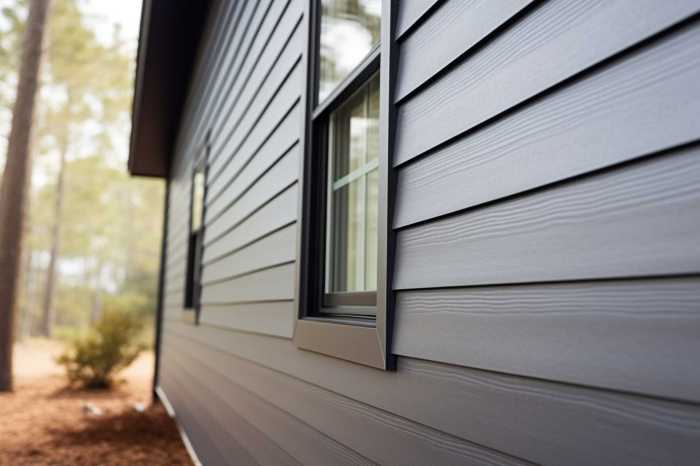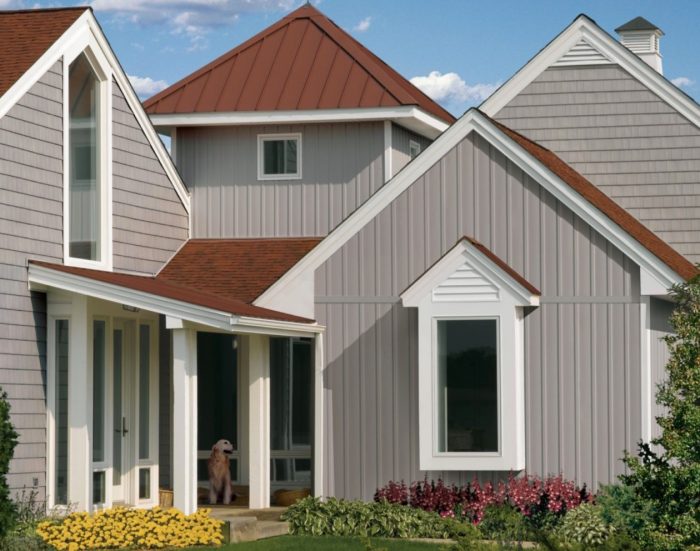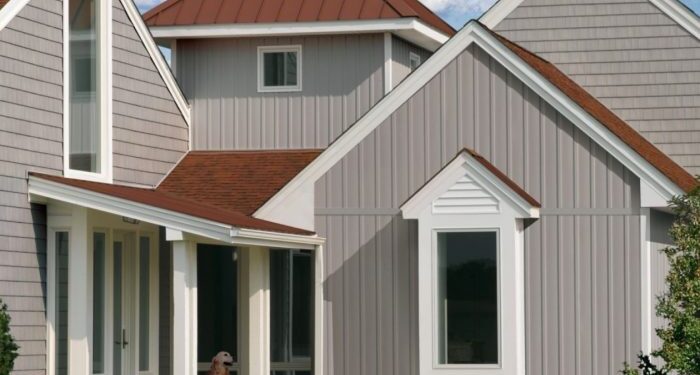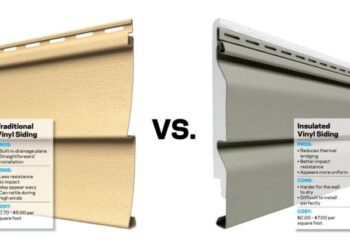In today's world, the importance of eco-friendly choices cannot be overstated. When it comes to siding options for your home, going green is not only beneficial for the environment but also for your wallet. Let's delve into the world of eco-friendly siding options and discover how you can make a positive impact while enhancing the aesthetics of your home.
As we navigate through the different types of eco-friendly siding, sustainable materials, cost comparisons, and installation tips, you'll gain valuable insights into creating a more sustainable living space.
 When it comes to siding materials, sustainability is a key factor to consider. Sustainable siding materials are those that have a minimal impact on the environment throughout their lifecycle, from production to disposal. These materials are typically sourced responsibly, require less energy to manufacture, and are often recyclable or biodegradable.
Comparing sustainable siding materials with traditional options, the environmental impact is significantly lower. Traditional siding materials such as vinyl or aluminum often require high energy inputs during production, release harmful chemicals into the environment, and contribute to landfill waste when replaced.
On the other hand, sustainable siding materials are designed to be more eco-friendly, reducing carbon footprint and promoting a healthier environment.
When it comes to siding materials, sustainability is a key factor to consider. Sustainable siding materials are those that have a minimal impact on the environment throughout their lifecycle, from production to disposal. These materials are typically sourced responsibly, require less energy to manufacture, and are often recyclable or biodegradable.
Comparing sustainable siding materials with traditional options, the environmental impact is significantly lower. Traditional siding materials such as vinyl or aluminum often require high energy inputs during production, release harmful chemicals into the environment, and contribute to landfill waste when replaced.
On the other hand, sustainable siding materials are designed to be more eco-friendly, reducing carbon footprint and promoting a healthier environment.
 When comparing the cost of eco-friendly siding options to conventional ones, it's important to consider the initial investment versus long-term savings. While eco-friendly siding materials may have a higher upfront cost, they often offer significant savings over time.
When comparing the cost of eco-friendly siding options to conventional ones, it's important to consider the initial investment versus long-term savings. While eco-friendly siding materials may have a higher upfront cost, they often offer significant savings over time.
 As we conclude our exploration of eco-friendly siding options, it's clear that making environmentally conscious choices doesn't have to be daunting. By opting for sustainable materials and considering long-term savings, you can contribute to a greener future while enjoying the benefits of a beautiful home.
As we conclude our exploration of eco-friendly siding options, it's clear that making environmentally conscious choices doesn't have to be daunting. By opting for sustainable materials and considering long-term savings, you can contribute to a greener future while enjoying the benefits of a beautiful home.
Types of Eco-Friendly Siding
When it comes to choosing eco-friendly siding options for your home, there are several materials available that offer sustainability and energy efficiency benefits.Wood Siding
Wood siding is a popular eco-friendly option that is renewable and biodegradable. It can be sourced from sustainably managed forests and offers a natural and rustic look to your home.Recycled Metal Siding
Recycled metal siding is another eco-friendly choice that is durable and long-lasting. It is made from recycled materials such as aluminum or steel, reducing the need for new resources and minimizing waste.Fiber Cement Siding
Fiber cement siding is a composite material made from cement, sand, and cellulose fibers. It is a low-maintenance and durable option that is resistant to fire, rot, and pests. It can also be recycled at the end of its lifespan.Bamboo Siding
Bamboo siding is a sustainable alternative to traditional wood siding. Bamboo is a fast-growing grass that can be harvested without killing the plant, making it a renewable and eco-friendly material for siding.Sustainable Siding Materials
 When it comes to siding materials, sustainability is a key factor to consider. Sustainable siding materials are those that have a minimal impact on the environment throughout their lifecycle, from production to disposal. These materials are typically sourced responsibly, require less energy to manufacture, and are often recyclable or biodegradable.
Comparing sustainable siding materials with traditional options, the environmental impact is significantly lower. Traditional siding materials such as vinyl or aluminum often require high energy inputs during production, release harmful chemicals into the environment, and contribute to landfill waste when replaced.
On the other hand, sustainable siding materials are designed to be more eco-friendly, reducing carbon footprint and promoting a healthier environment.
When it comes to siding materials, sustainability is a key factor to consider. Sustainable siding materials are those that have a minimal impact on the environment throughout their lifecycle, from production to disposal. These materials are typically sourced responsibly, require less energy to manufacture, and are often recyclable or biodegradable.
Comparing sustainable siding materials with traditional options, the environmental impact is significantly lower. Traditional siding materials such as vinyl or aluminum often require high energy inputs during production, release harmful chemicals into the environment, and contribute to landfill waste when replaced.
On the other hand, sustainable siding materials are designed to be more eco-friendly, reducing carbon footprint and promoting a healthier environment.
Examples of Sustainable Siding Materials
- Wood:Wood siding is a classic and sustainable option, especially when sourced from certified sustainable forests. It is biodegradable, renewable, and provides natural insulation properties.
- Fiber Cement:Fiber cement siding is made from a blend of wood fiber, cement, and sand, creating a durable and low-maintenance material. It is resistant to rot, pests, and fire, making it a long-lasting eco-friendly choice.
- Recycled Metal:Siding made from recycled metal, such as steel or aluminum, is not only durable but also reduces the need for new resource extraction. It can be recycled again at the end of its lifespan, creating a closed-loop system.
- Bamboo:Bamboo siding is a rapidly renewable material that grows quickly and requires minimal resources to cultivate. It is strong, lightweight, and biodegradable, making it an excellent eco-friendly alternative.
Cost Comparison
 When comparing the cost of eco-friendly siding options to conventional ones, it's important to consider the initial investment versus long-term savings. While eco-friendly siding materials may have a higher upfront cost, they often offer significant savings over time.
When comparing the cost of eco-friendly siding options to conventional ones, it's important to consider the initial investment versus long-term savings. While eco-friendly siding materials may have a higher upfront cost, they often offer significant savings over time.
Long-Term Savings
One of the key advantages of choosing eco-friendly siding is the potential for long-term savings on energy bills. Materials like insulated vinyl siding or fiber cement siding can help improve the insulation of your home, reducing the need for heating and cooling. This can lead to lower energy bills and reduced maintenance costs in the long run.Financial Incentives
Another factor to consider is the availability of financial incentives or rebates for choosing eco-friendly siding. Many local and state governments offer incentives for homeowners who make energy-efficient upgrades to their homes, including siding. These incentives can help offset the initial cost of eco-friendly materials, making them a more cost-effective choice in the long term.Installation and Maintenance
When it comes to eco-friendly siding materials, proper installation and maintenance are crucial to ensure their longevity and effectiveness. Here we will discuss the installation process, provide tips for maintenance, and address any special considerations or challenges that may arise.Installation Process
- Ensure that the surface where the siding will be installed is clean, dry, and free of any debris to promote proper adhesion.
- Follow the manufacturer's guidelines and instructions carefully to guarantee a correct installation.
- Consider hiring a professional contractor with experience in installing eco-friendly siding materials to ensure a high-quality installation.
Maintenance Tips
- Regularly inspect the siding for any signs of damage, such as cracks, warping, or discoloration, and address them promptly.
- Clean the siding at least once a year using a mild detergent and water to remove dirt, grime, and mold that may accumulate over time.
- Avoid using harsh chemicals or abrasive materials when cleaning the siding to prevent damage to the surface.
Special Considerations
- Some eco-friendly siding materials may require specific maintenance procedures, such as periodic sealing or re-staining, to maintain their appearance and performance.
- Extreme weather conditions or exposure to sunlight may impact the lifespan of eco-friendly siding, so regular inspections and maintenance are essential.
- Consult with the manufacturer or a professional contractor if you encounter any challenges or issues during the installation or maintenance process to ensure proper care of the siding.
Closure
 As we conclude our exploration of eco-friendly siding options, it's clear that making environmentally conscious choices doesn't have to be daunting. By opting for sustainable materials and considering long-term savings, you can contribute to a greener future while enjoying the benefits of a beautiful home.
As we conclude our exploration of eco-friendly siding options, it's clear that making environmentally conscious choices doesn't have to be daunting. By opting for sustainable materials and considering long-term savings, you can contribute to a greener future while enjoying the benefits of a beautiful home.







